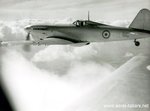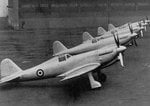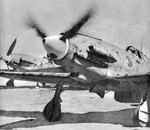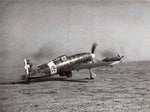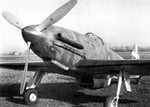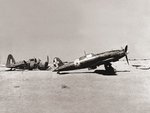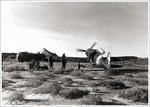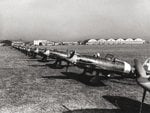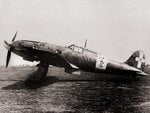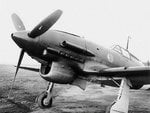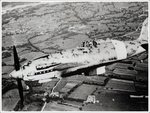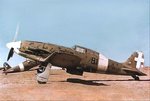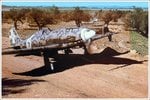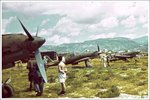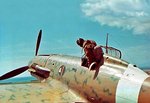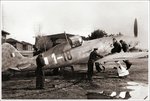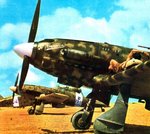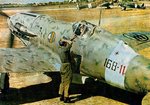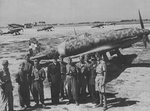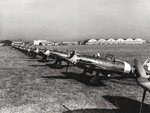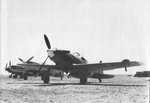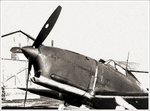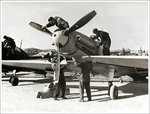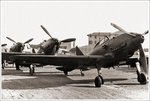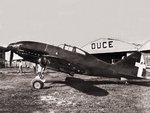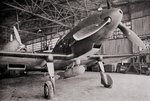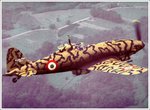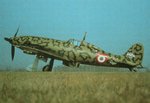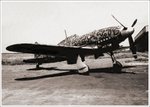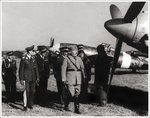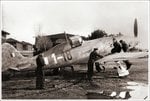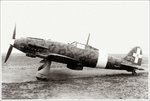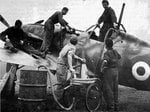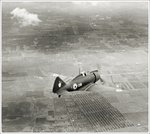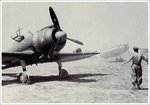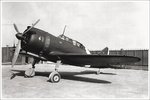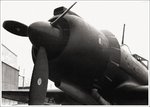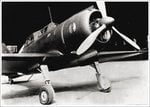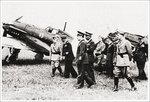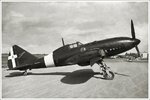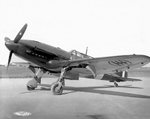- Thread starter
- #21
The Fiat G.59 was a post-war trainer producing by matching the fuselage of the G.55 Centauro with the Rolls Royce Merlin engine. It was produced in single-seat versions as the G.59-1A, -2A, -3A and -4A and in two-seat versions as the -1B, -2B and -4B. The -1 and -2 series aircraft were similar to the wartime G.55s, while the -3 was a single prototype of a navigational trainer and the -4 series got a new bubble cockpit canopy and cut-down rear fuselage, much like late-war Spitfires. The G.59 was an excellent training aircraft for its time, with performance reasonably close to that of contemporary fighters and excellent manoeuvrability. Just under 200 G.59s of all types were built.
The G.59-2A was a single-seat fighter produced in response to an order from Syria. It was armed with four 20mm cannon, all located in the wings, and could carry bombs or auxiliary fuel tanks. Thirty were built, of which twenty-six went to Syria. The Syrians also purchased nineteen of the G.59-2B two-seater trainer.
Source: Fiat G.59
The G.59-2A was a single-seat fighter produced in response to an order from Syria. It was armed with four 20mm cannon, all located in the wings, and could carry bombs or auxiliary fuel tanks. Thirty were built, of which twenty-six went to Syria. The Syrians also purchased nineteen of the G.59-2B two-seater trainer.
Source: Fiat G.59

